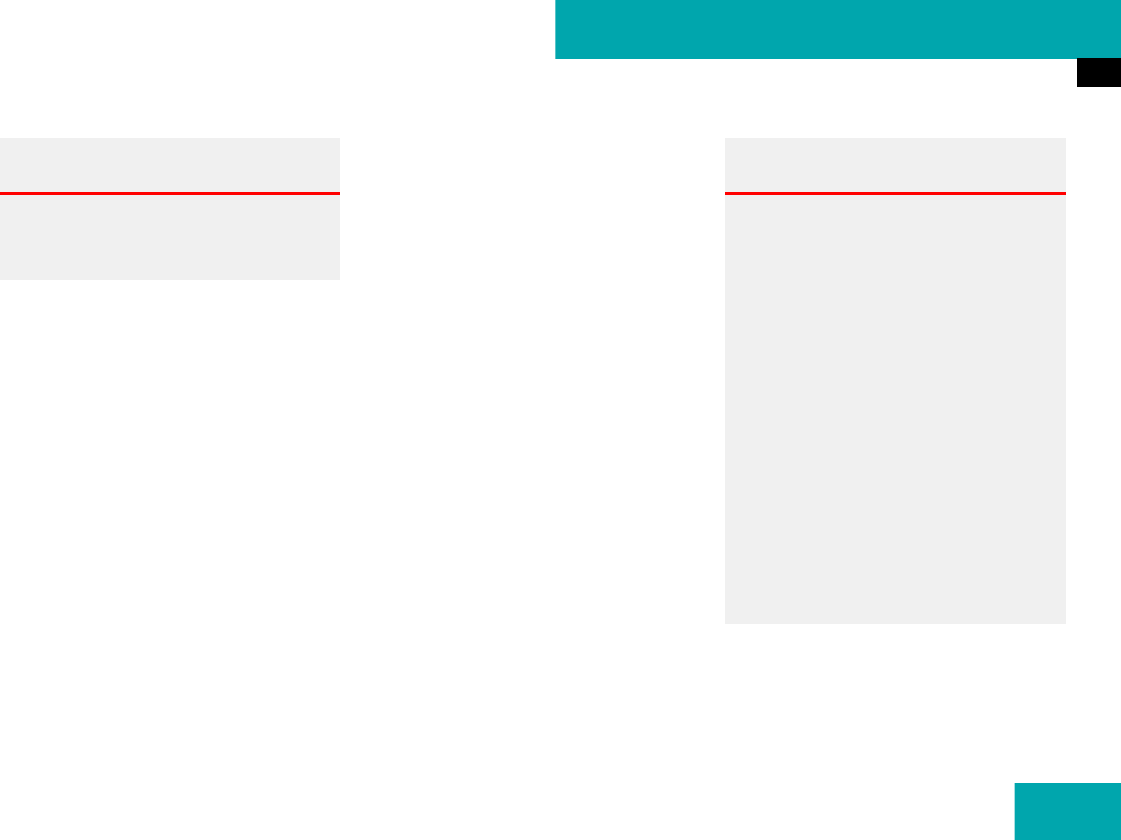
83
Safety and Security
Occupant safety
The use of infant or child restraints is re-
quired by law in all 50 states, the District
of Columbia, the U.S. territories and all Ca-
nadian provinces.
Infants and small children should be seat-
ed in an appropriate infant or child
restraint system properly secured in
accordance with the manufacturer’s
instructions for the child restraint, that
complies with U.S. Federal Motor Vehicle
Safety Standards 213 and 225 and
Canadian Motor Vehicle Safety Standard
213 and 210.2.
A statement by the child restraint manu-
facturer of compliance with these
standards can be found on the instruction
label on the restraint and in the instruction
manual provided with the restraint.
When using any infant or child restraint
system, make sure to carefully read and
follow all manufacturer’s instructions for
installation and use.
Please read and observe warning labels
affixed to the inside of the vehicle and to
infant or child restraints.
Warning! G
Never release the seat belt buckle while the
vehicle is in motion, since the special seat
belt retractor will be deactivated.
i
For information on child seats with mounting
fittings for tether anchorages, see “Installation
of infant and child restraint system”
(
୴ page 92).
For information on LATCH-type child seat
mounts, see “Child seat anchors – LATCH type”
(
୴ page 91).
Warning! G
According to accident statistics, children
are safer when properly restrained in the
rear seating positions than in the front seat-
ing position. Thus, we strongly recommend
that children be placed in the rear seats
whenever possible. Regardless of seating
position, children 12 years old and under
must be seated and properly secured in an
appropriate infant or child restraint
recommended for the size and weight of the
child.
The infant or child restraint must be properly
secured with the vehicle’s seat belt, the seat
belt and top tether strap, or lower anchors
and top tether strap, fully in accordance
with the child seat manufacturer’s
instructions.
୴୴


















